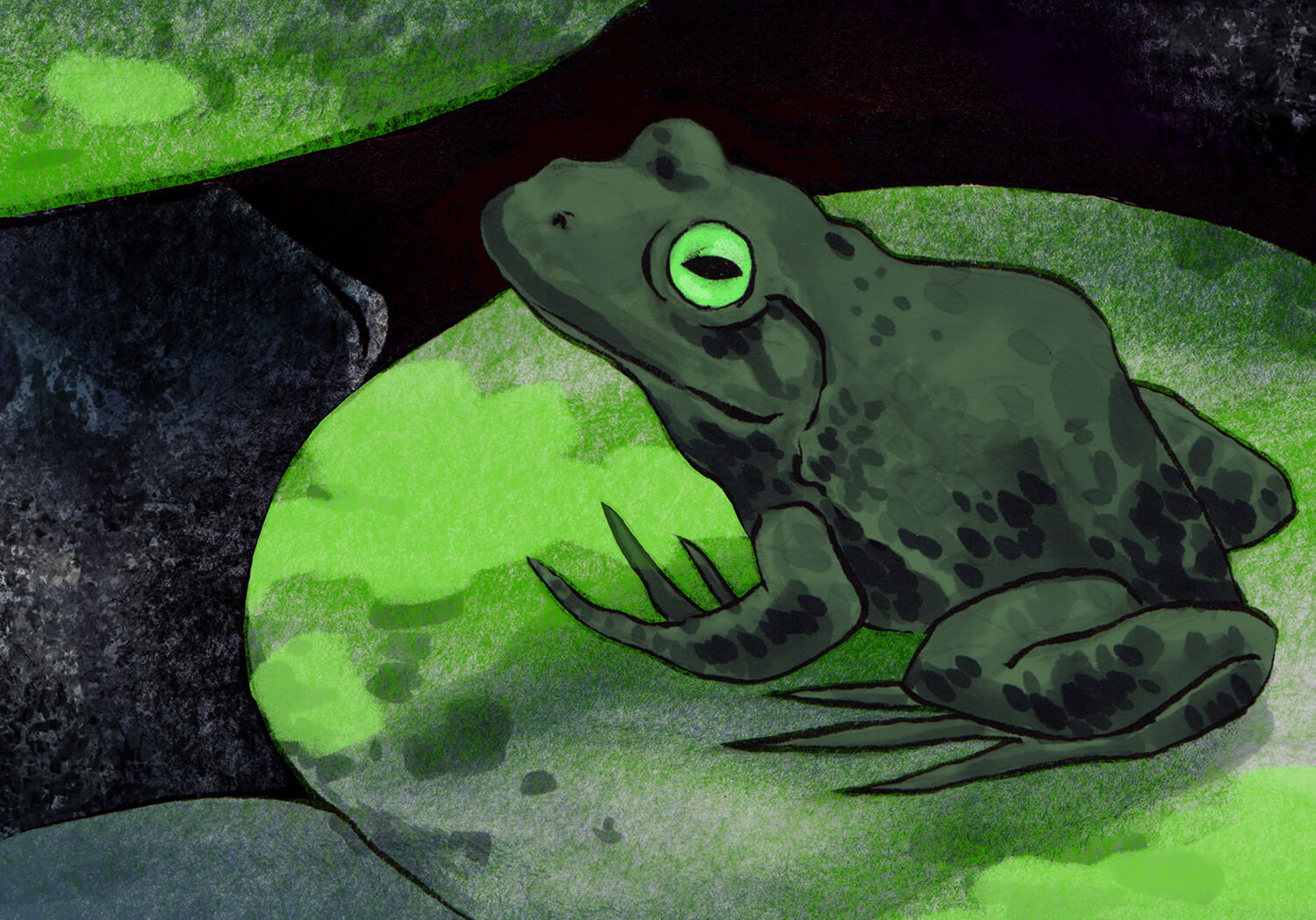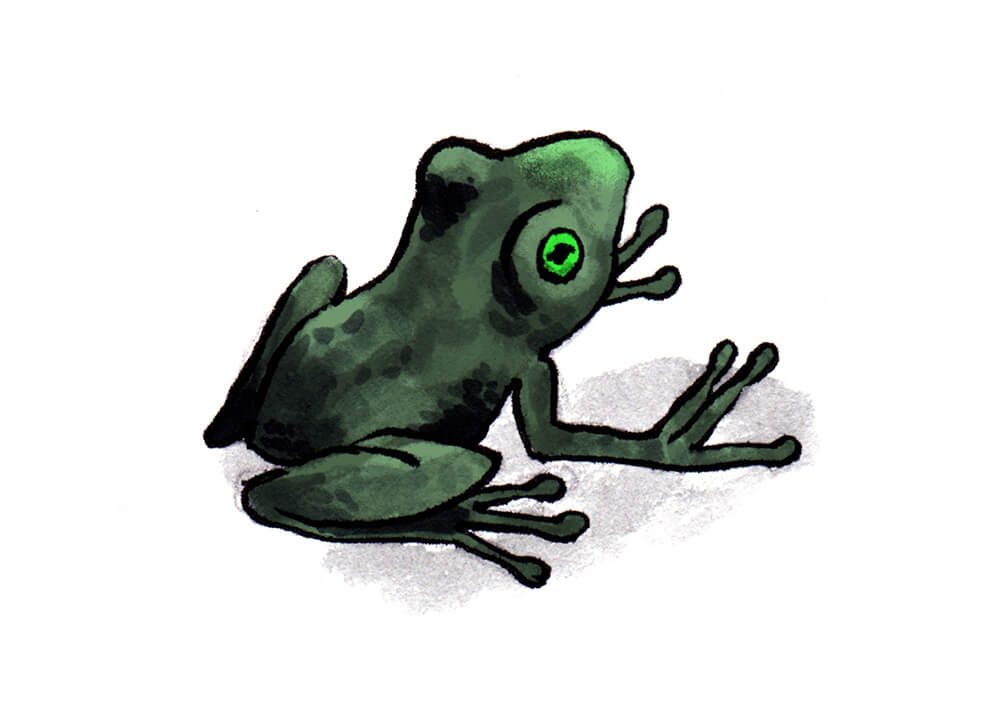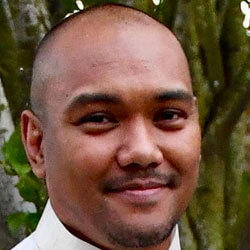
“Until I see in his hands the mark of the nails, and place my finger into the mark of the nails, and place my hand into his side, I will never believe” is one of my favorite verses. As a kid, I appreciated Thomas’s approach: what I couldn’t see, hear, or touch wasn’t real. I maintained a modicum of disbelief about anything I hadn’t personally witnessed.
In high school biology, I was specifically intrigued by the concept of convergent evolution, which explains how different species develop similar traits when adapting to a similar environment. It is why distinct species like the dolphin and the penguin have both developed flippers to move through the ocean. However, it’s not the individual animal that evolves within its lifetime, but the collective species that changes over eons. And because no one can live long enough to witness the change for himself, the change can only be identified by trusting in the observations of others across history. That was intriguing to someone who arrogantly relied on his own experience to understand.
It turns out that something similar takes place in the realm of religion. Forms of belief that originated from a common source can diverge and converge over time due to environmental and societal pressures. Most of the time, however, change is slow and cumulative. That’s how my faith has evolved: so incremental that I’m unaware of its development and its impact. It’s only through trusting what other people have seen that I can recognize a movement from individual skepticism toward something communal, something tangible.

• • •
For nearly all first- and second-generation Filipino Americans, Catholicism is as innate to one’s identity as basketball and halo-halo (the Filipino version of America’s “baseball and apple pie”). For 500 years, it has been a powerful clarion for both shaking up the sociopolitical status quo in the Philippines and maintaining it. One’s personal relationship with God is moderated through the Church community, and so, expressions of faith are in the context of the Filipino Church. The difficulties of living in a developing nation society — filled with poverty, political corruption, and marginalization — find an outlet via loyalty and devotion to Christ, his Church on Earth, and his saints.
Upon arriving in the U.S., most Filipino immigrants connect with their local communities through the local Church, a needed source of solace, comfort, and familiarity in a new world. But the personal nature of the Christ narrative can be lost in translation as it is passed down to the next generation — “the God who carried me through so many trials” becomes “the God who relates to them and their culture, but not to me and my American experience.” As for me, my father’s faith remained my father’s faith — I carried forward his understanding of his relationship with God, not my own.
• • •
In 2000, I had begun attending an evangelical Protestant church — ironically, not because of a desire to explore my faith, but because of my romantic interest in a woman who attended the church — and, in spite of myself, I began to consider what God may actually have in store for me. With more than a touch of guilt for “cheating on Catholicism”, I began to attend Protestant church services in different communities to explore how they chose to connect with God.
However, despite the next six years of attending evangelical Protestant services at a nearby church, I never saw Protestantism as anything more than a novelty. Even as I recognized what Protestantism had to offer to me personally, I did not see it as anything more but “lucked-upon” insights and revelations that God deigned to give to these misguided, Protestant souls.
One morning in 2006, I joined a Sunday service at Trinity Episcopal Church in San Jose. I kept waiting for service to shift into a “Spirit-filled”, sermon-dominated form of worship that had characterized Protestant worship for me, but it never did. Instead I sat there stunned by how similar its liturgy was to that of the Catholic Mass, right down to the order of service, decor, and solemn posture.

As I sat in this Episcopal service, I thought through those years of evangelical Protestant experiences and realized that, just like this branch of the faith, it wasn’t so dissimilar from my root faith experience. In thought and practice, these branches had diverged from Catholicism over time, but there were still beliefs and rituals that remained similar, if not outright the same.
Then those lessons from high school biology emerged: Outside of a common origin and growth within a common culture, could there be a reason for these converging aspects even as they evolved into different forms? It was right about this time in the service that the Episcopal congregation recited the familiar Nicene Creed:
We believe in the Holy Spirit, the Lord, the giver of life, who proceeds from the Father and the Son. With the Father and the Son he is worshiped and glorified. He has spoken through the Prophets. We believe in one holy catholic and apostolic Church ...
Then it hit me: Duh. It’s the Holy Spirit, stupid. God has been working throughout history, in Protestant, Catholic, and every other branch of the faith ... and God hadn’t restricted God’s self to working just within the Church, either.
A few weeks later, I decided to enroll at Fuller Theological Seminary — a Protestant institution — and I was again reminded that my personal exploration of the faith paled in comparison to the centuries of exploration and the study of countless others who had gone and are going on the same journey. Moreover, I realized that the tiny stream that was my journey with God had always been a part of a river of collective journeys, filled with their personal witnesses to God’s presence and action. I was no longer aimlessly drifting alone in the current — I was now flowing within a past, present, and future community, intermingling and evolving toward something communal, something tangible.

• • •
“I’m still Catholic — it’s just that Jesus led me here,” I would say to members of the evangelical Protestant church to which I had solidly committed myself. In 2000, I wouldn’t have admitted to anything of the sort, but now in 2008, I said it proudly. It elicited an odd look whenever I affirmed my Catholic upbringing; most were expecting an outright rejection of it. On occasion, I experienced the uncertainty and passive hostility that some Protestants hold toward Catholics — as I had been warned in my childhood — as they spoke openly about their derision of a faith that “places the Pope as infallible”, “worships saints instead of God”, and “believes that good works, and not faith, leads to salvation”. They shared all of this with me, believing that I was “one of them on the ‘right’ side”.
After getting past the defensiveness that their hostility conjured, I considered their critiques honestly — were they right, or were their views simply elaborations on bad information they had received about Catholicism? I arrived at a conclusion: What mattered was that their views were being challenged. Discomfort catalyzes a sort of personal religious evolution, and that change can lead to a communal evolution. It was the reason I chose to remain in this Protestant community: The community created such discomfort in me that it led me to grow, hopefully for the better. The same discomfort could do the same in them, if they embraced it.
• • •
By 2014, I had become a pastor of another Protestant congregation, which reflected a spectrum of Christian beliefs on many issues. Sensing a need in the community, the pastors proposed an addition of corporate prayer time to the usual order of service. I offered the Catholic Mass liturgical structure of “the Prayers of the Faithful” as a template upon which prayer leaders could build. The pastors agreed, believing it to be an uncontentious addition.
We were wrong. Very wrong. Some who volunteered to lead prayer during services said, “Prayer should be improvisational and led by the Spirit … but you’re expecting us to prepare in advance. That is hollow, and the Spirit doesn’t lead like that.” Others said, “You’re using a structure of prayer from a spiritually bereft institution that harms communities — the structure is therefore invalid.” Their theologies of prayer lay across the spectrum, just as their general understandings of God did. The church’s leadership realized that this disagreement was an opportunity for the community to evolve. Through our discussions, the volunteers and the leadership arrived at a common understanding: God works in and through all types of prayer, including those we find uncomfortable. Our diverging beliefs and practices can find space to converge and find common ground in something communal, something tangible.

• • •
In 2016, I found myself sitting with my soon-to-be wife as she attended her first-ever Catholic Mass. As a lifelong Protestant, she, too, had heard about how “Catholicism had chosen its own tradition over the authority of Scripture”, and she had entered the service uncomfortable with what lay ahead. With every step through the liturgy, however, she discovered that a Catholic Mass is jam-packed with Scripture. The “Spirit-less rote recital of man-made prayers” was actually the recital of Bible passages, and the litany of call-and-response was actually direct citations from the Old and New Testament.
In my memory, no one in my Catholic upbringing had ever pointed this out to me. But now, I could see a new beauty within the Mass: how the prayer of humility before communion was taken verbatim from a story of a Roman centurion reflecting on his unworthiness to host Jesus as a guest in his home; how the lyrics of so many of my favorite Catholic folk songs were taken directly from the Psalms; and how the physical architecture of a Catholic church is meant to resemble the Temple in Jerusalem. My personal faith had diverged from an adolescent Catholicism toward a mature Protestantism, but as a result, I had become even more rooted in my Catholic faith and simultaneously less sure about what I hold to be true. But for the environment in which I live, my faith is the correct one for me, and the adaptation of Protestantism allows me to experience the light and love of God in the lives of those around me.
By allowing God to take my faith in a direction I first eschewed, my faith has evolved, becoming a collection of changes occurring across individuals and groups throughout history, each one experiencing Jesus in a similar yet unique way, and branching in convergent and divergent directions. It’s now one more journey in the collection of intertwined journeys, all reaching toward something tangible.

What is that something? I don’t know, but as unsure of the destination I may be, I have become absolutely certain of this: the Spirit of God did not stop being the parakletos — our intangible Helper and Guide — when Jesus died, nor when the Age of Thomas and the Apostles ceased, nor when the Bible was made canon by Jerome in the fifth century, nor at the Great Schism or the Reformation. It will not stop being our Helper as we now face the challenges of how to include in our communities those who love Jesus but also find their identities in a different culture or orientation, or even within a different faith. It will not stop being our Helper ever, until our collective Christian faith and its practice in the world becomes something tangible, resembling the kingdom of heaven.
• • •
A few years ago, I sat with one of my aunts in an airport waiting for a connecting flight. She had been a devout Filipina Catholic, seeing the Church of Rome as the One True Church, and devoting herself to ministry through her local Catholic church and its practices of prayer and service. She had also been very concerned that I had not only entered a Protestant seminary, but also had joined a Protestant church as a pastor. She had avoided discussing it with me, but since we were now captive audiences to each other, she asked me a direct question: “Why live in all this, and not in the faith you grew up in?” Over the next 10 minutes, I summarized my views of a God reaching out to me and to us in ways we don’t expect, and how each of our faith journeys need to evolve.
Her response surprised me: “I feel the same way. I have felt God leading me in my direction … and now I know God’s leading you in yours. We may take different journeys, and we may not fully agree on how to get there, but now I know that God’s taking us to the same place. And I’m OK with you taking that journey.”
Until I see in his hands the mark of the nails … I will never believe. A devout Catholic aunt whose understanding of God has allowed her to see eye-to-eye with her Protestant-pastor nephew: I wouldn’t have thought it was possible, unless I’d seen it for myself.

Mark Arevalo holds a B.A. in Economics and International Relations from UC Davis and an M.Div. from Fuller Theological Seminary, and has worked in both tech and vocational ministry for the last five years. A San Francisco Bay Area native, Mark appreciates exploring the other sides of all issues and finding God at work “in the big and the small”. He and his wife Stacy live in East Palo Alto.

John Enger Cheng serves as creative director of Inheritance. He is a Los Angeles-based artist, designer and illustrator. He graduated from the University of Southern California Roski School of Fine Arts and is co-founder of Winnow+Glean. You can see his illustrative work and store at madebyenger.com.